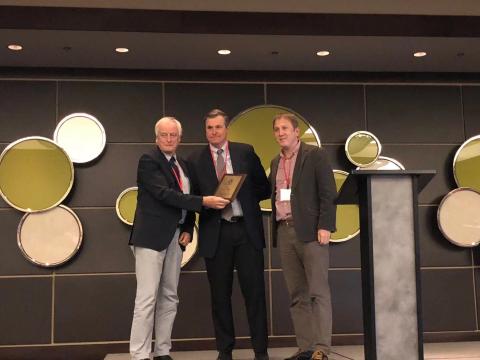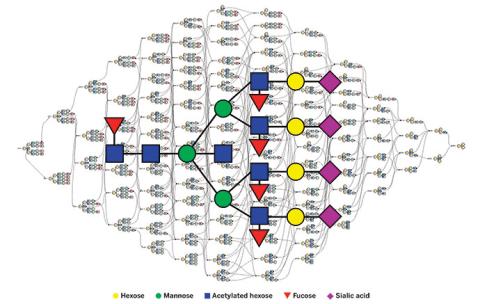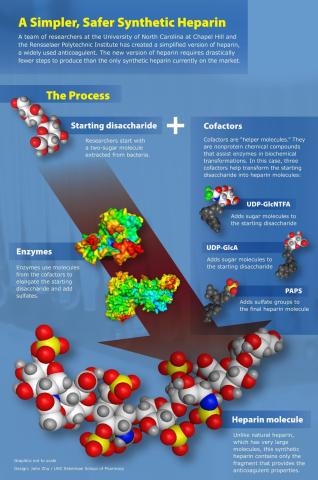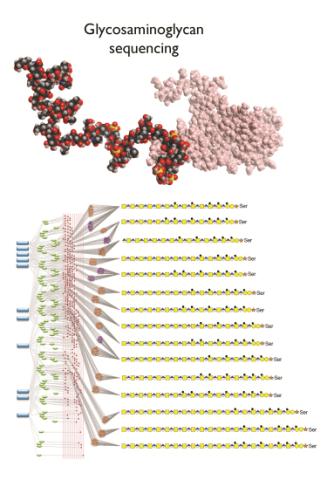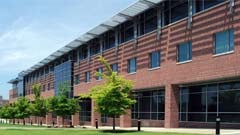News
Complex Carbohydrates: Improvements in methods, standards, and software are still needed to move mass spec analysis of carbohydrates into the mainstream.
Carbohydrates are ubiquitous. They densely carpet cell surfaces. They are the main component of the extracellular matrix that surrounds cells. They are involved in many aspects of cell-cell communication.
Researchers at Rensselaer Polytechnic Institute and the University of North Carolina at Chapel Hill (UNC) have created a synthetic form of low-molecular-weight heparin that can be reversed in cases of overdose and would be safer for patients with poor kidney function.
Healthy dose of research: RPI professor closing in on a new form of anticoagulant heparin.
Robert Linhardt grew up experimenting with a chemistry kit in his basement in Moorestown, N.J., while other kids his age played with gloves and bats on a baseball diamond.
Heparin, an anticoagulant, was first used in 1916 - one of the few drugs still in use which predates the establishment of the FDA. Heparin is a long, highly negatively charged polysaccharide known as a glycosaminoglycan, or GAG. While the naturally occurring polysaccharide is quite long, the anticoagulant properties of heparin are due to a short, five saccharide section of the molecule, found in only a third of the long heparin chain. A synthetic analog of this pentasaccharide sequence, Fondaparinux, can act as a substitute for natural heparin under certain conditions.
Together with collaborators from the University of Georgia and Chiba University of Japan, researchers in the our lab have recently decoded the sequence of bikunin. Bikunin is a proteoglycan - a protein decorated with a long, sulfated (and thus negatively charged) saccharide chain. Bikunin is also the simplest proteoglycan, having just one chain attached at one specific site. However, the mixture of different chain lengths and sulfation patterns created such a complex system that the individual components could not analyzed.
